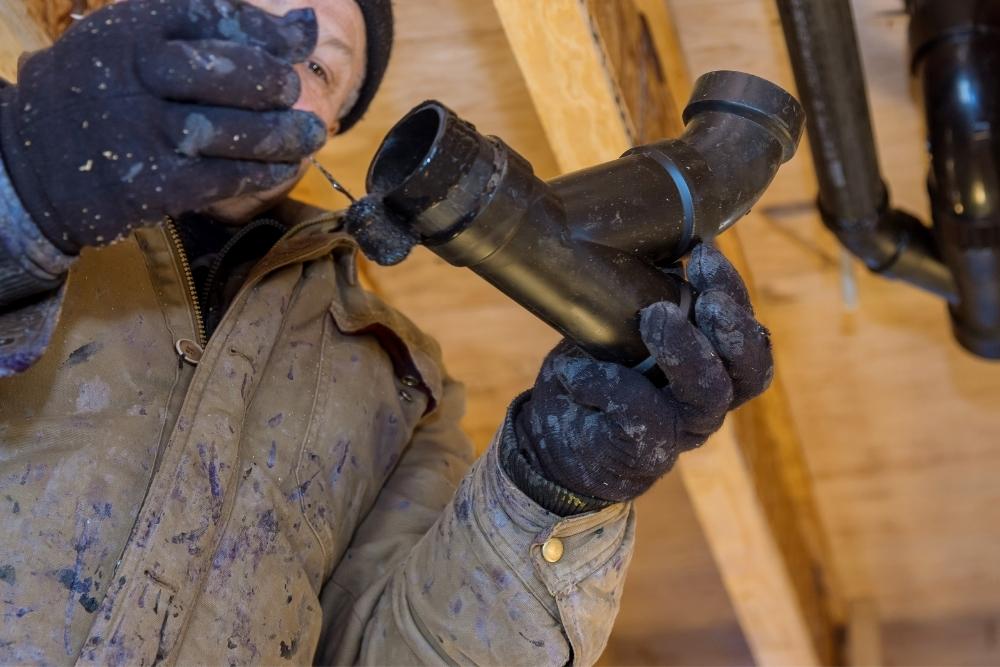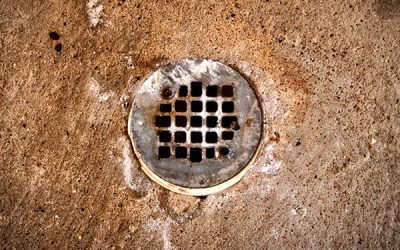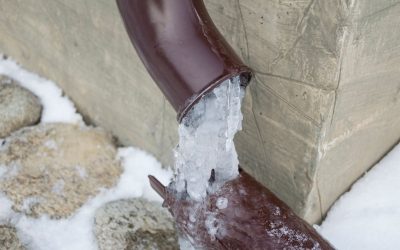While having some trees and bushes surrounding your property can look nice on the outside, you may not realize how much damage the roots of these plants could cause your drains.
In drains, especially those with cracks or fissures, root development is a possibility as it gives the roots a way in.
The oxygen, nutrients, and water found in sewer pipes are all also “vital” for root growth, which attracts the plants to this area even more. These roots can cause costly sewer system maintenance as well as causing large blockages.
Here are the most effective ways of removing roots from your drains.
Cutting The Roots
The most commonly used method for removing roots from drain pipes is mechanical root cutting. This is done by pushing a sewer auger with a spiral head through the pipes.
The teeth on the auger’s head are almost identical to those on a saw blade. The roots are chopped by the spinning of this auger, which clears the blockage.
This is only a temporary solution to roots getting into your pipes rather than a long-term answer.
Treat the Area with Chemicals
When tree roots are removed using a chemical, such as copper sulfate crystals, the root structure is damaged and the roots are unable to grow again.
Because the copper in this mixture can form a poisonous area in the soil, this method will successfully kill the roots.
Copper sulfate is also able to kill bacteria, algae, snails, fungi, and plants, but it is safe for trees even though it kills some of its roots. This is why copper sulfate is one of the preferred methods that plumbers use.
If you think you have roots in your pipes, then you can treat them with copper sulfate overnight.
Do this by pouring half a pound of copper sulfate (or sodium chloride) into your toilet bowl and flush just before heading to bed.
You can also use rock salt to kill off roots, though this is a far less popular option than copper sulfate.
This is because the salt is very hazardous to trees and other plant life around the area, and if you salt the ground too much you risk never being able to grow a plant in that spot again.
Another chemical product you can try is RootX. This is a foamy chemical that foams inside the pipes and coats the top, creating a barrier that keeps the roots out.
Use a Jet Washer
Cleaning tree roots from sewer pipes with a jet washer is a more expensive, but possibly quicker and easier option for removing roots. This machine, which can produce 18 gallons per minute, is powered by water and a pump.
Normally, jet washers have a range of 500 feet and are constructed out of wires that spin at 50,000 revolutions per minute. After the jet washer has finished the job, the drainage line can be chemically cleaned to destroy any leftover roots.
Call a Plumber
If all other methods have failed and roots are still getting into the system, then it may be time to call a plumber. This may be the best option if you have many cracked pipes as these will need to be replaced anyway.
If you have pipes made from concrete, terracotta, or asbestos-cement drainage, then these are very susceptible to cracking, and it’s best to replace them when you can.
Most plumbers use the jet wash method for drain cleaning and removing roots, but the machines they use can reach pressures of up to 4000psi, which is strong enough to injure or even cut a person.
How can roots get into the pipes?
Even the tiniest crack in a sewer or water line might allow root fibers to get inside.
Small cracks in older porcelain or earthenware pipes are very common, and even if they aren’t large enough to cause service issues, they can be enough for a tiny root to find its way inside to get to the nutrients.
PVC (plastic) pipes are far more resistant to tree roots, so long as the material is free of splits and cracks, and all joins are fully sealed when the pipes are first installed. The laying of the pipes can be what causes the roots to get in though.
During the pipe-laying stage, glue is used to stick the pipe sections together. The builders may use enough adhesive to hold the pipes together, but there may still be minor gaps from time to time. This is the root system’s open entrance to the rest of the pipe.
How to Stop Roots From Getting In
Once you have cleared the root blockage, there are a few things you can do to prevent them from getting in again:
Re-route Your Water Systems
this will take a lot of effort and plumbing work. If you’re choosing this method then make sure that the new pipes are laid more than 20 meters from the trees or any other large plants
Remove the Trees
This can be done by chopping them down or poisoning them. Bear in mind that if you chop down the tree, you will also have to remove many of the roots from below it as they could still spread to your pipes. It is also good to contact an arborist for better options and removing trees properly.
Reline Your Pipes
use a synthetic sleeve or composite resin to reline the pipes.
How Do Relining Pipes Prevent Roots From Getting In?
Composite resin technology has also turned the plumbing world upside down, with pipe repairs now possible without the need to dig.
CIPP pipe relining, also known as trenchless pipe relining, involves saturating a synthetic liner with composite resins, dragging the liner into place over damaged pipe sections, and curing the resin to create a durable, new, seamless pipe inside the old one.
This new pipe will keep roots out of your plumbing system for at least 50 years.
Takeaway
While roots in your pipes can be a very annoying issue, it’s a problem that can be fixed in a day or two if you use the right methods.
Unfortunately, if you do not move either the trees or the pipes then this is an issue that will keep happening. It’s best to do one of these things to prevent more damage from being done to your plumbing or sewage system.







